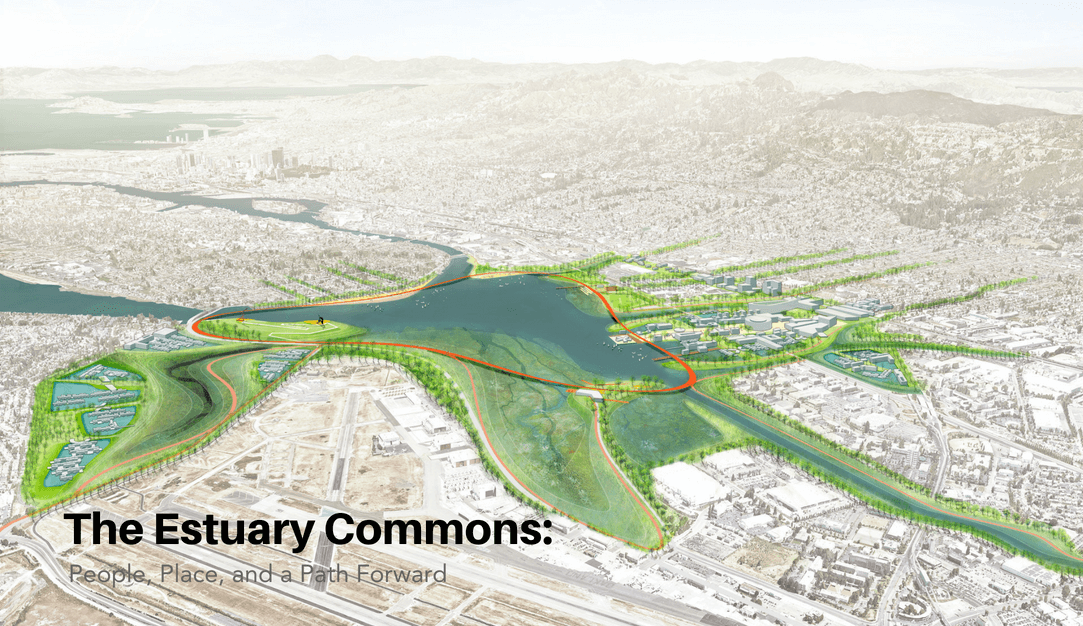To protect local neighborhoods and restore native habitats, All Bay Collective is rethinking the shoreline around San Leandro Bay with the creation of Estuary Commons. Through the construction of ponds, landforms, and expanded streams, the communities of Deep East Oakland, Alameda, and San Leandro will not only be able to adapt to sea-level rise and groundwater flooding, but will also have a network of flourishing greenways to enjoy for generations to come. ABC has worked closely with eight community organizations from East Oakland to move the communities from the margins to the center of the design and planning process.
ALL BAY COLLECTIVE PROPOSES FOUR INTERRELATED APPROACHES:
1. Catalyze existing, on-the-ground actions while helping establish conditions for long-term community equity and resilience;
2. Adapt the estuary to protect against flooding, restore ecosystems, create pathways, and provide gathering space;
3. Stitch together neighborhood and shoreline through new transportation and ecological corridors;
4. Prosper by leveraging public assets and private investment through community driven planning to deliver equitable, environmentally just, and resilient development.



